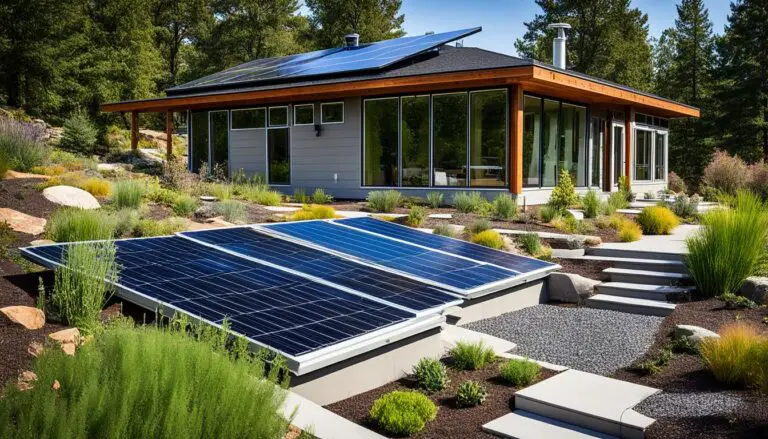Thinking about a new home or changing an old one? Remember, energy efficiency is key. It not only cuts costs and saves energy but also makes your home better to live in. A good first step is a home energy check. This tells you how to cut energy use and expenses.
Next, think about using renewable energy options. Solar panels, for example, can power your home and heat water. When starting fresh or renovating big time, consider everything. This includes appliances, insulation, and even the design of your windows and doors.
Help from an energy expert and the Home Energy Score are great tools. They offer tips and ideas to make your home more energy-efficient. Finally, adding ultra-efficient features like special roofs and smart designs can save more energy. They also lessen harm to our planet.
Key Takeaways:
- Investing in energy efficiency saves energy, money, and creates a comfortable home.
- Conduct a home energy assessment to determine the best energy-saving strategies.
- Consider renewable energy systems like solar panels for electricity and heating.
- Adopt a whole-house systems approach when designing or remodeling your home.
- Work with an energy assessor and use the Home Energy Score for valuable insights.
Essential Energy-Saving Features for Your Home Design
Making your home energy-efficient is key. It saves money and helps the planet. You’ll also enjoy a cozy home environment.
1. Home Design
Consider an energy-smart floor plan. Put your house in a spot that gets lots of sunlight and solar energy. This means less need for electric lights.
Adding skylights or light tubes can brighten your home naturally.
2. Building Materials
Use sustainable materials like reclaimed wood and recycled metal. They look good and are kind to the Earth. This reduces your home’s carbon footprint.
3. Windows and Doors
Choosing energy-efficient windows and doors is a must. Look for Energy Star products to keep heat in or out. This keeps your home comfy year-round.
4. Heating and Cooling Systems
Get heating and cooling systems that save energy. Think about air conditioners and heat pumps. Keep them in good shape for the best results.
5. Insulation
Good insulation keeps the temperature steady. It cuts heating and cooling bills. Use materials like foam board to stop heat loss or gain.
6. Appliances and Electronics
Pick appliances with the Energy Star label. They use less power but work great. Switching to these can lower your electric bill a lot.
7. Smart Home Technology
Add smart technology to manage energy better. Things like programmable thermostats and motion-sensing lights help you use less energy effortlessly.
Smart touches like insulating curtains also make a big difference. They help save money and energy. You’ll feel the benefits in your comfortable, sustainable home.
With these smart, eco-friendly features, your home will not only save energy but also be a pleasant place to live. Enjoy lower bills and help the planet too.
The Benefits of Building Energy-Efficient Homes
Building energy-efficient homes has many rewards for homeowners and the environment. Green homes lower our impact on nature by using natural resources, recycled stuff, and new tech. They cut down our use of energy, which means lower energy bills and less dependence on fossil fuels.
This kind of home also helps keep the power grid stable and reliable. By having energy-saving features, we fight climate change. We do this by reducing carbon emissions and other harmful pollutants.
When it comes to money, energy-efficient homes save costs in the long run. They use less energy. Such homes are also worth more because they’re attractive to those who care about the environment. Owning one means staying ahead of government rules on energy savings, preventing expensive updates.
In the end, energy-efficient homes make living comfortable and eco-friendly. They’re good for us and good for the planet.


